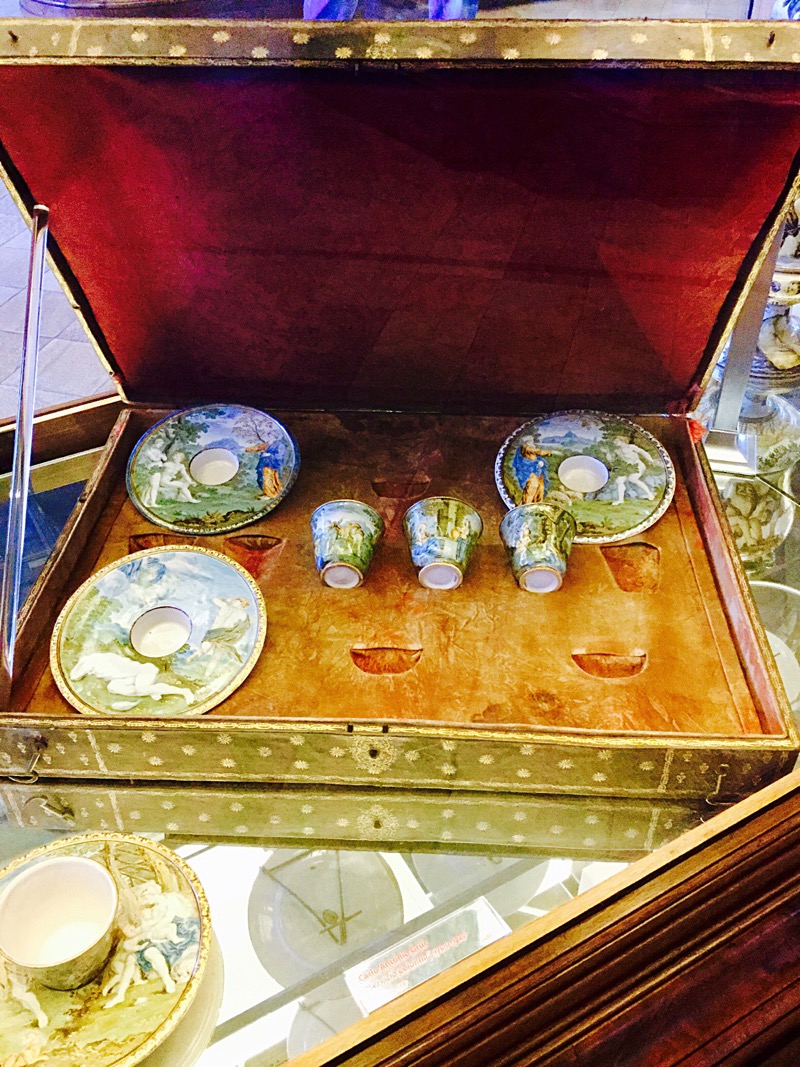
A família italiana dos Grue, esteve particularmente ativa na arte das cerâmicas nos séculos XVI e XVII; estava estabelecida em Castelli, na região de Abruzzo, e ficou na história da Maiolica di Castelli, que corresponde à faiança italiana do Renascimento, maioritariamente produzida em Florença.
Existem estudos que indicam que já era produzida na idade média tendo-se, contudo, tornado famosa a partir do Renascimento. Tecnicamente, é uma cerâmica porosa e colorida, com revestimento transparente ou opaco, e com reflexos metálicos.
Carlo Antonio Grue (1655-1723), autor do Serviço Colonna, na imagem, dedicou-se sobretudo ao estudo de paisagens e de novas cores para as transpor para as cerâmicas.
De realçar que a descoberta da Majólica (ou fiança) teria grande influência na arte da azularia portuguesa. De facto, foi graças à encomenda de painéis de azulejos para o Palácio de Vila Viçosa feita pelo Duque de Bragança, no século XVI, que a majólica ganhou presença em Portugal.
Curiosidades!!!
Na imagem, o serviço Colonna, produzido entre 1700-1720 por Carlo Antonio Grue e que pode ser visto no Palazzo Madama, em Turim.
In English
The Italian family of Grue, was particularly active in the art of ceramics in the sixteenth and seventeenth centuries. It was established in Castelli, in the region of Abruzzo, and remained for the history of the Maiolica di Castelli, which corresponds to the Italian faience of the Renaissance, mostly produced in Florence.
There are studies that indicate that it was already produced in the middle ages but has become famous since the Renaissance. Technically, it is a porous and colored ceramic, with transparent or opaque coating, and with metallic reflections.
Carlo Antonio Grue (1655-1723), author of the Colonna Service, dedicated himself to the study of landscapes and new colors to transpose them into ceramics.
At It should be noted that the discovery of the Majolica would have a great influence on the Portuguese Art of Tiles. In fact, it was thanks to the commissioning of tile panels for the Palace of Vila Viçosa made by the Duke of Bragança, in the 16th century, that majolica was present in Portugal.
Curiosities!!!
In the image, the Collona set, produced from 1700 to 1720 by Carlo Antonio Grue which can be seen in the Palazzo Madama, Turin.
